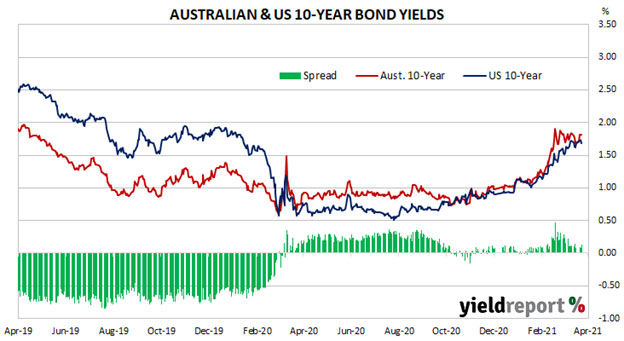Developing reliable Yield in your SMSF

If you build it, the yield will come.
Okay, all kidding aside, developing a plan for a reliable and meaningful yield within a self-managed super fund does require the careful management of risk and reward. You should be careful and accept modest returns with lower risk, and not attempt to falsely improve returns while increasing risk to an unacceptable level.
One of the great things about a self-managed super fund is that, to a great extent, you are in control of your own financial destiny. However, if you are going to invest without an adviser, you will need to know some of the more reliable yield products available to you and your superannuation fund.
To help you build your “Yield of Dreams,” keep reading for some key information about cash products, bonds, managed funds, exchange traded funds (ETF) and hybrids. Having a wider picture of the options available to you will go a long way to helping you ensure a reliable and meaningful yield within your self-managed super fund.
Cash Accounts
Honestly, the sky is the limit when it comes to short-term cash investments. There are a wide variety of products offered, including: Bank Bills, High Interest Cash Accounts, Term Deposits, and Managed Cash Funds. Literally hundreds of options to invest your money exist. It is hard for any investor to find the time necessary to track down the mountain of interest rate information, and then sort the information to make an informed comparison.
For example, short-term interest rates are driven by a wide range of factors, such as Reserve Bank cash rate, interbank swap rates, access to deposits and offshore/wholesale interest rates. It may surprise you to learn that many rates change every day. Our friends at YieldReport collect the daily rate changes from every major provider, and guess what: they found over 470 different term deposit products!
There is a lot of information out there on interest rates and short-term cash investments – too much to fit into a few paragraphs – but, like anything, if you are willing to do the hard work of researching and navigating interest rates you can get a better idea of what your options are for cash investments.
Bonds
No, we are not talking about Sean Connery, Roger Moore or Daniel Craig – though that would be fun. These “bonds” are instruments that represent a loan made by an investor to a borrower (typically corporate or governmental). Think of it as a kind of I.O.U between you and the government or corporation and used to finance projects and operations.
When thinking about investing in bonds it is important to know what types of bonds are available to you and the differences between them. Are there differences in yield and risk? Most importantly, are bonds something that make sense for you as you are building your investment portfolio? We are going to quickly highlight these questions as we examine three types of bonds in which you can invest: government, semi-government and corporate.

Government Bonds
Government bonds are a much-underused investment vehicle by most Australians. Surprisingly, almost seventy (70) percent of Australian Commonwealth Government Bonds are held by offshore investors. Think about that: seventy percent of Australian government bonds are held by non-Australians! That is why the government, through the Australian Stock Exchange, is trying to encourage a much wider spectrum of investors to become buyers and sellers of bonds. Check out bond prices listed on the ASX.
Exchange-traded Australian Commonwealth Government Bonds (ACGB) are the latest major development for financial markets and are now traded on the ASX like ordinary shares. You can choose to hold the bond until it matures, or you can take advantage of a positive price movement in a bond now, by selling it before maturity.
These securities come with the same rating as the Commonwealth of Australia itself – AAA – the highest credit rating available! So, if you are looking for a low-risk investment that pays a regular income stream, then an investment in Australian Commonwealth Government Bonds may be the investment for you.
Semi Government Bonds
Semi-government bonds are much like commonwealth government bonds (ACGB’s), except they are issued by the various state and territory governments, not the commonwealth government. Like other bonds, these semi-government bonds come in a variety of maturities and pay different rates of regular interest. The various issuers of the bonds also carry different credit ratings designed to reflect the credit worthiness of each state government.
Given that, the yields on semi-government bonds are generally slightly higher than ACGB’s. This reflects the additional credit risk of a state government over the commonwealth government. Investors can choose a slightly higher yielding semi-government bond by accepting a slightly higher credit risk.
Comparing prices and yields for these semi-government bonds can be a tricky and time-consuming undertaking for investors. If you are willing to put in the time and take a higher credit risk, the reward may well be worth it. No matter what, it is always important to keep the risks in mind when approaching any investment opportunity.
Corporate Bonds
Last, but certainly not least, we have corporate bonds. As their name suggests, corporate bonds are issued by Australian companies and financial institutions. Generally, these bonds will be rated by at least one of the main credit rating agencies so that investors can get a sense of the credit worthiness of the issuer.
Corporate bonds will often have higher yields than either government or semi-government bonds, again reflecting the different credit risks. For an investor, the extra yield of a corporate bond, much like a semi-government bond, could be well worth the extra perceived risk.
As we close this section on bonds, it is important to note that while government, semi-government and corporate bonds yields are closely related, they will also often move independently. Often, in times of economic upheaval, investors will demand higher yields and invest in corporate or semi-government bonds, rather than government bonds. There are varied returns, but also varied levels of risk with each type of bond. Only you can calculate the kind of risk you are willing to take, but bonds – whether government, semi-government or corporate – may be a valuable component to your investment portfolio.
Hybrids
Hybrids are about mixing and/or combining different components. In investments, hybrid instruments combine features of debt and equity and that can make them attractive instruments in which you can invest. At their simplest, hybrids offer a regular return with the option to convert into equity (shares) at a future date. However, a range of different terms and conditions introduced over the years have made them quite complex. Given this complexity, it is critical to understand the terms of each hybrid before investing. It is simply not enough to look at the headline yield and judge a book by its cover.
There are many different hybrids, including: preference shares, reset preference shares, convertible notes, capital notes and step-up preference shares, just to name a few. Any investor needs to know what happens at maturity, or if the issuing company comes under financial pressure.
Hybrids are becoming increasingly important financial instruments – particularly those hybrids issued by financial institutions. As new regulations are introduced to avoid the kind of bank collapse that the world saw in the wake of the global financial crisis, hybrids will only raise in profile. As such, it is more important than ever for investors to understand what hybrids are and how they perform under different circumstances.
Managed and Exchange Traded Funds (ETF)
Both managed bond funds and exchange traded funds (ETF) are important asset classes for investors seeking to invest in interest rate securities. If you do not have the time or inclination to invest directly into bonds, you can instead choose a managed bond fund or ETF. This is where a fund manager invests on behalf of the fund.
An ETF has the added flexibility of being listed on the ASX, so investors can buy units in the fund just as they would buy ordinary shares. They can even select a specific fund for corporate bonds, government bonds, or even cash and bank bills.
Once again, our friends at the YieldReport provide updates on the most recent performance figures on a range of cash products, bonds, hybrids, bond funds and ETF’s.

These figures help readers select the best product for their fund. It is important to remember that YieldReport does not itself recommend or place funds. As such, it does not generate any commissions from providing this service. This ensures that the information provided is unbiased, independent and, therefore, a valuable tool in researching your investment options.
Take advantage of your resources for research. An informed investor is a confident and more successful investor, so do your homework to get the most out of your fund.
What’s So Great About Independence?
You choose a self-managed super fund because of the independence it allows in planning your financial future. However, a great majority of fixed interest securities are not traded on a public exchange like the ASX, so things like pricing are hazy at best. In addition, many fees are included in quoted prices and rarely disclosed. Most investors are at an information disadvantage to market dealers, and this is likely to cost them money.
So, knowledge is power for the independent investor. You choose a self-managed super fund because you are committed to the idea that the individual knows better than anyone what is best for their financial future. You are willing to gain the knowledge which, in turn, will make you a more sophisticated and successful investor. Who you are and what you want is what guides a self-managed fund, but to be truly successful you have to have access to the best information.
If you would like advice on any of the financial products listed above, we can direct your enquiry to one of Sequoia’s divisions. Sequoia manages both General Advice and Personal Advice services, so we can provide whatever resources you need to manage your fund and your investment priorities.
For more information, reach out to our team at admin@sequoia.com.au. We have the knowledge to help you gain that independence and take control of your own financial future. So, give us a call. One question can make all the difference!




